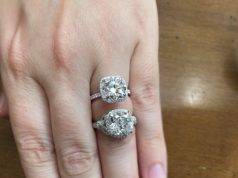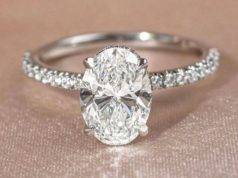When describing diamonds that aren’t from the earth, jewelers must follow guidelines set forth by the Federal Trade Commission (FTC). The Jewelry Guides require disclosures to truthfully represent the origin of lab-grown diamonds and distinguish them from manmade substitutes.
But are consumers getting the message? Amid rising consumer interest in sustainable goods, lab diamonds have surged in popularity.
1>1. They Are Real
p>A mined diamond has a high environmental and humanitarian cost. The alternative, lab grown diamonds, are a lot less expensive lab grown diamonds Melbourne. This is because the supply chain for lab-created diamonds is a lot shorter than it is for mined ones. This means there are fewer shipping costs and no unnecessary handling, which helps keep the price low.The fact is that most people, even professional gemologists, can’t tell the difference between a lab created and a mined diamond. The reason is that diamonds, whether natural or synthetic, are made up of carbon atoms in a lattice crystal structure.
This is why, according to a recent survey by the World Federation of Diamond Bourses, consumers have overwhelmingly adopted the idea that lab grown diamonds are real. That’s despite the fact that some diamond interests are trying to muddy the waters by claiming that cultivated diamonds aren’t really “real,” but rather fake.
It’s clear that the mined diamond establishment doesn’t want to give up ground in this battle. But if it wants to retain its appeal, it will have to focus on making sure that all marketing claims are factually accurate and clearly distinguish between the two products. Otherwise, it could risk being slapped with fines by the FTC’s Jewelry Guides, which require marketers to truthfully represent the origin of diamonds and gemstones.
2. They Are I>2. They Are Identical to Mined Diamonds
lot of misinformation out there about lab grown diamonds, and it can be difficult to discern what is fact and what is fiction. But if you understand the 4Cs of diamonds (clarity, color, cut and carat weight) and the differences between the two types of diamonds, you can make an informed decision about whether to purchase a lab created or mined diamond.But as the popularity of lab-created diamonds continues to grow, some mined diamond producers have been pushing back. In two recent cases, the Natural Diamond Council and Diamond Foundry both took issue with each other’s marketing of LGDs, arguing that without clear disclosure that the stones were produced in a laboratory, it was misleading for marketers to claim lab-grown diamonds are real.
Jewelers Vigilance Committee President Tiffany Stevens says that although the FTC’s revised Jewelry Guides allow for a greater range of terms than previously, the word “natural” still is off limits. And she adds that marketers must also continue to comply with the guidelines’ prohibition on using the phrase “sustainable” in association with any of their gemstones or diamonds.
She says she’s pleased that the FTC crackdown on the use of the term “real” will give lab-grown diamond manufacturers peace of mind, and help protect consumers from being tricked into purchasing gussied-up cubic zirconia. Ultimately, she believes consumers will be the big winners—and the mined diamond industry will be the biggest losers.
3. They Are Certified
Somet>3. They Are Certifiedd called man-made, synthetic or cultured. All of these terms refer to the same thing, a certified diamond that was grown in a lab rather than mined.
There are two ways to make diamonds in a lab, chemical vapour deposition (CVD) and high pressure, high temperature (HPHT). To create a CVD diamond a flat slither of another diamond is placed in a chamber with gasses and then heated until carbon begins to grow on the seed crystal. Once this happens the diamond has been formed and is ready to be cut and polished.
Both HPHT and CVD diamonds are certified by the same international gemological laboratories that grade mined diamonds. These two labs are the International Gemological Institute, more commonly known as IGI and the Gemological Institute of America, more commonly referred to as GIA. Most of the diamonds on the market today will have a GIA or IGI certificate.
The grading of diamonds is subjective and it is not preferred that a jeweler compares a lab created diamond with another lab-grown diamond graded by the same lab. The reason is that each lab has its own measure and conception of a particular grade in a given category. For example, the IGI identifies color as D, E and F while GIA classifies a diamond as colorless.
4. They Are Inscribed
As th>4. They Are Inscribedto evolve, it’s becoming increasingly difficult for consumers and even gemologists to distinguish between mined and lab created diamonds. This is not a bad thing as it’s allowing people who want to be more ethical to buy lab grown diamonds and help save the planet. These diamonds are made using special machinery that mimics natural environmental conditions without harming ecosystems.
As a result, they are much more ethical than mined diamonds, which can be found in mines across the globe and extracted through complex pit, underground, or alluvial methods that require heavy machinery and extensive labor. This is why the National Advertising Division of the FTC has ruled twice that diamond-related marketing must include disclosures of lab-created diamonds.
When last year’s revision to the FTC Jewelry Guides came out, it seemed that many lab-grown diamond companies interpreted this change as a free pass, thinking that nobody would notice their marketing tactics or that they man made diamonds UK could get away with a little deception. However, recent warning letters sent by the Federal Trade Commission to eight lab-grown diamond and simulant companies show that this new standard is being interpreted much more strictly than some expected, including Jewelers Vigilance Committee president and CEO Tiffany Stevens.
Conclusion
The way to tell if a d>Conclusionown or not is by looking at its girdle (the widest part of the diamond) for an inscription that says “Lab Grown.” This is typically incredibly small and requires at least 20x magnification, often 30x magnification, in order to be seen with the naked eye.











